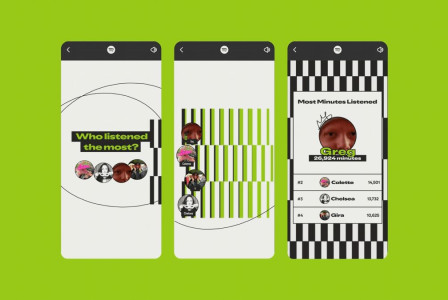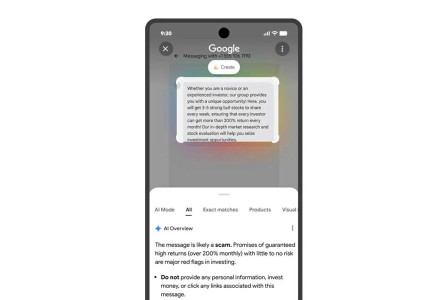SEARCH
OpenAI introduces GPT-5.1 with a friendlier touch and smarter thinking

SHARE IT
OpenAI is once again making headlines in the AI world with the rollout of GPT-5.1, a refined version of its flagship GPT-5 model launched earlier this year. The company is billing the update as more personable, adaptive, and capable—an effort to address user feedback and smooth out the rough edges of its predecessor’s debut.
The launch of GPT-5 back in August was one of the most anticipated moments in AI development. Yet, despite the excitement, the rollout faced notable criticism from users who found the model inconsistent in tone and reasoning. OpenAI’s new GPT-5.1 is a direct response to that feedback, designed to make the experience feel both more natural and intelligent while expanding personalization features for individual users and businesses alike.
As with GPT-5, OpenAI is maintaining two distinct versions of the new model: GPT-5.1 Instant and GPT-5.1 Thinking. The idea is to give users flexibility between a faster, conversational AI and a deeper reasoning engine that can handle more complex interactions.
GPT-5.1 Instant serves as the default mode for most ChatGPT users. It is quicker, lighter, and built for everyday conversations, creative tasks, and quick information retrieval. However, this iteration introduces something new—what OpenAI describes as a “warmer” personality. The model has been tuned to sound more natural, empathetic, and engaging, making conversations feel less robotic and more human. It also incorporates a feature called “adaptive reasoning,” which enables it to decide when to pause and think before answering particularly challenging queries. According to OpenAI, this adaptive thinking process improves accuracy across various benchmarks without sacrificing speed or fluidity.
On the other hand, GPT-5.1 Thinking represents the pinnacle of OpenAI’s reasoning technology. The company says this version is faster and more consistent than the original GPT-5 Thinking model while being less technical and easier to interact with. It’s designed to maintain its composure when facing complex, multi-step tasks and to express ideas in a way that’s easier for non-expert users to understand. At the same time, it has been trained to sound more approachable and emotionally attuned—an important shift from previous reasoning-focused models that were often criticized for sounding too formal or detached.
One of the most notable additions in GPT-5.1 is the expansion of personalization options in ChatGPT. Users can now adjust how the model communicates with them, choosing from a variety of tones to better match their preferences and communication style.
The new tones include Professional, Candid, and Quirky, joining the existing Default, Friendly, and Efficient modes. Each option is designed to alter not just the tone of the model’s responses, but also the rhythm and phrasing of its language. For example, Professional aims for polished, business-ready writing; Candid focuses on direct, transparent communication; while Quirky injects creativity and playfulness into replies.
OpenAI also notes that ChatGPT will soon become more proactive about tone adjustments. If the system detects that a user frequently requests responses in a particular style, it may suggest updating their tonal preferences to match. These personalization features are being rolled out gradually, meaning not all users will see them immediately.
Behind the scenes, GPT-5.1 introduces a new routing system called GPT-5.1 Auto. This system determines which version of the model—Instant or Thinking—is best suited to handle a user’s prompt. The goal is to ensure that simpler requests are processed quickly while complex problems get the deeper analysis they require, all without the user needing to choose manually.
For current subscribers, GPT-5.1 is being deployed in phases to ChatGPT Pro, Plus, Go, and Business accounts. Free-tier users will receive access in the coming weeks. The update will also be integrated into OpenAI’s API later this week, extending its reach to developers and enterprise clients building custom AI solutions.
In an effort to ensure a smooth transition, OpenAI is keeping GPT-5 (Instant and Thinking) available under a “legacy models” dropdown for paid ChatGPT users over the next three months. This allows customers to compare both generations side by side before committing to the upgrade. The company emphasized that this “sunset period” will not affect other legacy models and that future deprecations will always be announced well in advance.
GPT-5.1 marks a turning point in OpenAI’s approach to user experience. Where earlier models focused almost exclusively on technical improvement—better reasoning, broader knowledge, faster processing—this update places equal weight on personality and tone. OpenAI is clearly responding to a growing expectation that artificial intelligence should not only be accurate and fast but also relatable.
By combining deeper reasoning capabilities with emotional intelligence and customizable tone, GPT-5.1 represents OpenAI’s attempt to make AI interactions feel less transactional and more like real conversation. It’s a balance between power and personality that could set the tone for future generations of ChatGPT and the broader AI landscape.
As GPT-5.1 continues to roll out across OpenAI’s ecosystem, users can expect an AI that not only thinks smarter but also communicates with warmth, clarity, and charm—one conversation at a time.
MORE NEWS FOR YOU

 Help & Support
Help & Support 

